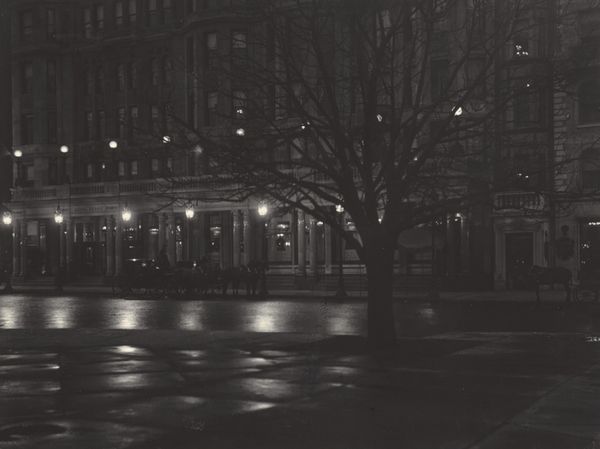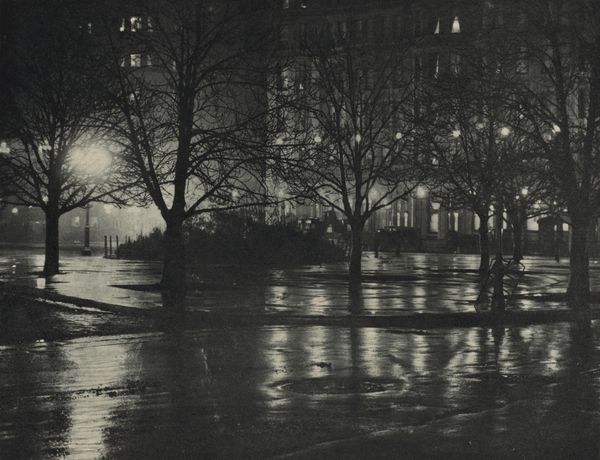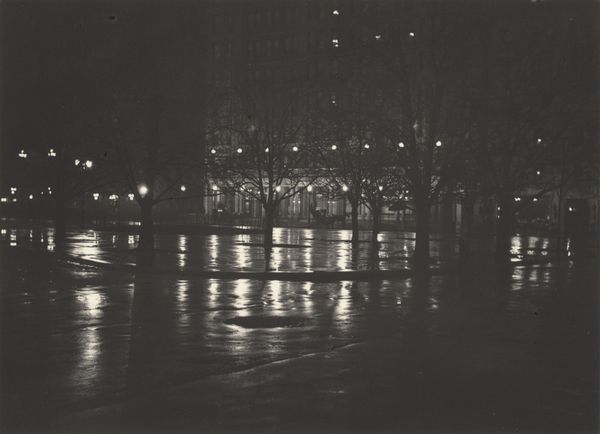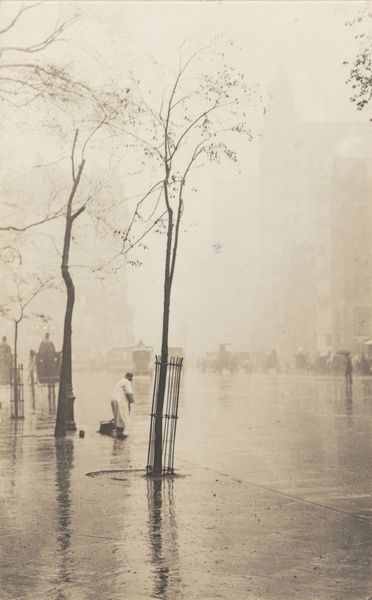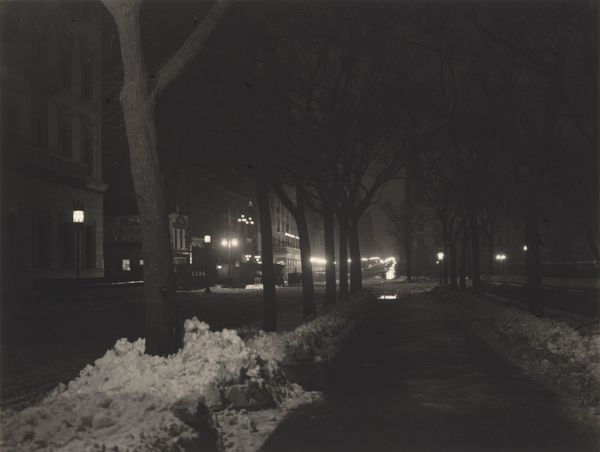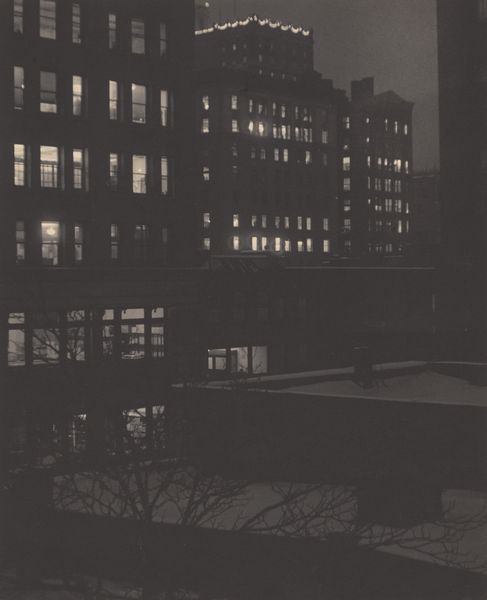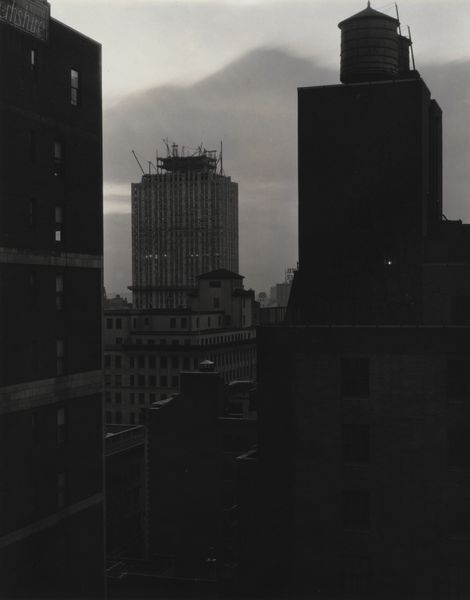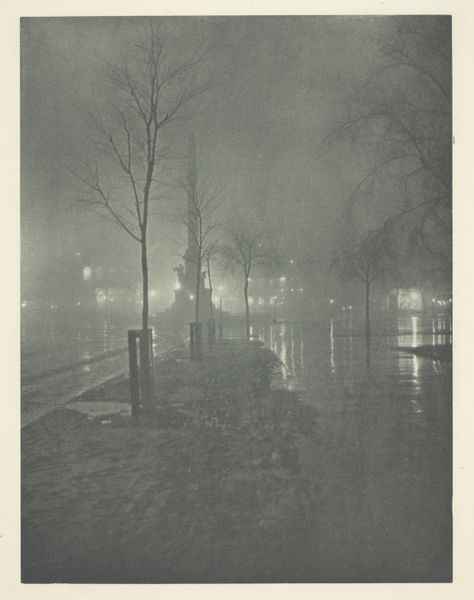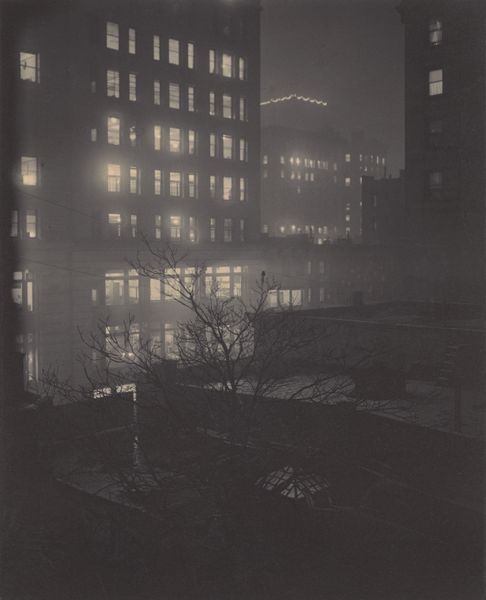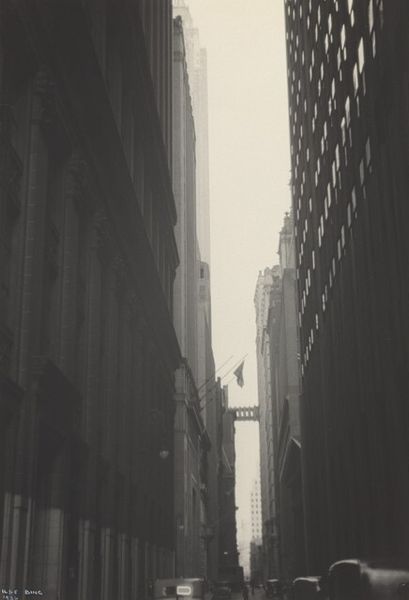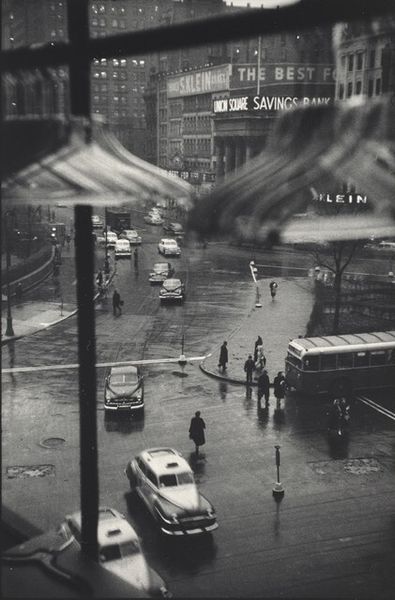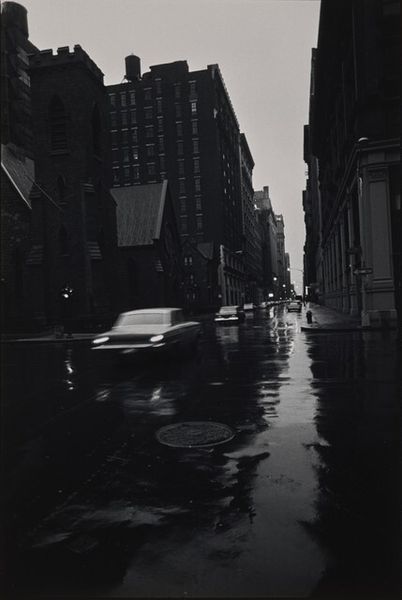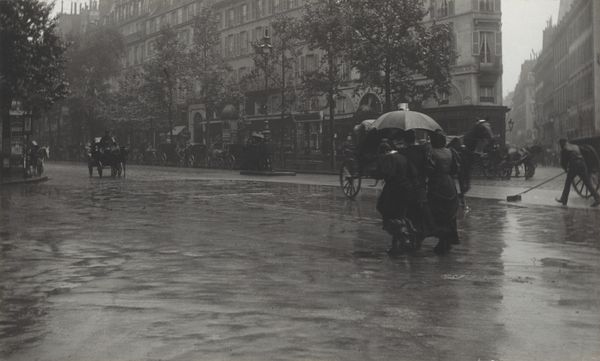
photography, gelatin-silver-print
#
black and white photography
#
pictorialism
#
black and white format
#
street-photography
#
photography
#
gelatin-silver-print
#
monochrome photography
#
cityscape
#
monochrome
#
modernism
#
realism
#
monochrome
Dimensions: sheet (trimmed to image): 8.7 x 11.3 cm (3 7/16 x 4 7/16 in.) mount: 33 x 27.1 cm (13 x 10 11/16 in.)
Copyright: National Gallery of Art: CC0 1.0
Curator: What a beautifully haunting image. This is Alfred Stieglitz’s photograph, "Night—New York," a gelatin silver print created sometime between 1897 and 1932. Editor: My first impression is melancholy. The wet pavement, the bare tree silhouetted against the soft glow of the building behind—it evokes a profound sense of urban solitude, a timeless feeling really. Curator: Indeed. Stieglitz, as a proponent of Pictorialism and later, straight photography, straddled a unique period. His works are often charged with capturing modern urban life through the lens of aestheticism, something akin to translating painting to photography. Here, the atmospheric conditions feel almost deliberate, like a staged drama. This artistic manipulation—the focus, tonal range—elevated photography as an art form during a period when its artistic value was fiercely debated. Editor: The visual language is captivating. That bare tree, almost centrally placed, resonates like a skeletal emblem. The starkness contrasting with the illuminated architecture symbolizes the tension between nature and the rapidly developing cityscape. Is it perhaps also about death and renewal, the promise of life in an urban desert? Curator: That's a compelling interpretation. It could equally reflect the socio-economic divisions that were rapidly increasing within cities at the turn of the century, revealed here by this divide, an emptiness in front of grandeur. Look closely—it speaks to the power structures embedded within these early urban landscapes; an attempt to grapple with urbanization's effects on the populace. It marks the transformation of space and the psychological impact it has. Editor: True, the hotel and the horse carriages suggests a certain elitism. Yet, the reflective puddles democratize the light, reflecting the spectacle of wealth onto the cold ground. A leveling symbol, if a temporary one. The water, which often symbolizes transformation and emotion, dominates the lower half of the frame, suggesting undercurrents, hidden feelings within the urban fabric. Curator: What is fascinating here is how it allows the social dimensions and political undercurrents to exist so gracefully within a composition admired primarily for its visual elegance. It made political art far more widely consumable in galleries. Editor: Absolutely. Stieglitz has woven an intricate web. He offers us an entry point into understanding how the urban environment shapes not only the physical landscape, but also the inner worlds of the people who inhabit it. Curator: Precisely, a perfect demonstration of how aesthetics and social consciousness can coexist, to shift societal ideas and actions in public spaces. Editor: It definitely leaves you pondering long after you’ve left its presence.
Comments
No comments
Be the first to comment and join the conversation on the ultimate creative platform.
